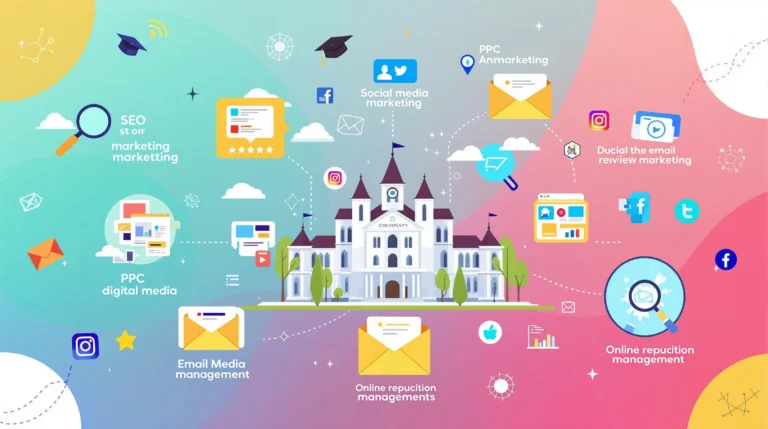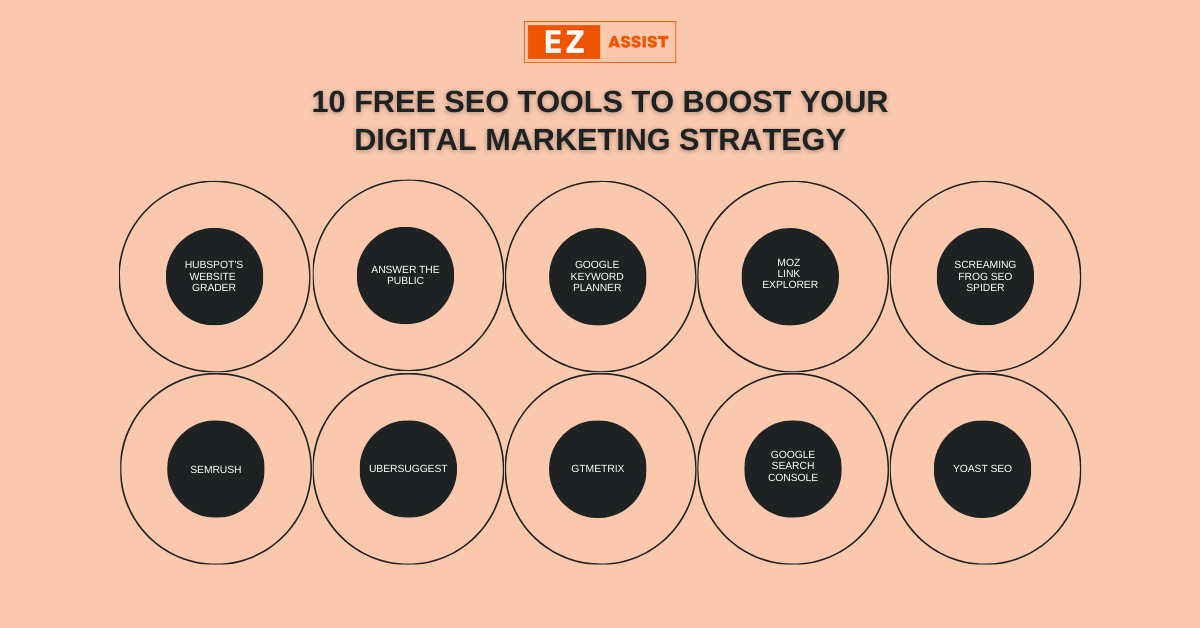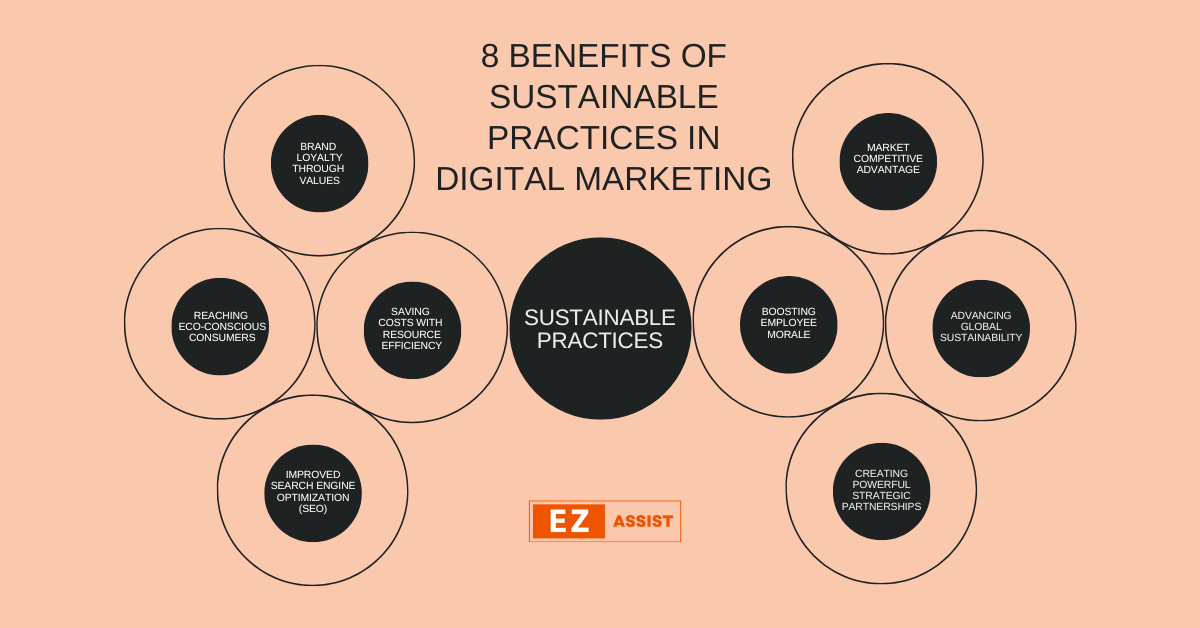With the rise of the internet and social media, education today is no longer limited to physical space or a verbal recommendation. There are many options available, including advertisements for colleges, tutorials, internet educational programs, and even schools and universities. For this reason, it is essential for educational institutions to employ some form of digital marketing strategy in order to remain relevant, compete, and actively pursue potential students and networks.
Online marketing strategies have become the new brand-building strategies to ensure that educational institutions are boosted in terms of enrolment, branding, and maintaining relationships with learners. In this post, we are going to look at how you can leverage online marketing to promote your school in this age where everything digitizes.
The Importance of Digital Marketing for Educational Institutions
The importance of the role of digital marketing in the education industry cannot be underestimated. It would be essential to note that a lot has changed in the way potential students look for opportunities to further their education, interact with institutions, and make decisions on the institution to enroll with. Thus, here are a few reasons as to why educational institutions should bother utilizing digital marketing:
Searching the Internet: According to recent research, more than 90% of aspiring students in America today begin their studies by first searching for relevant programs on the internet. Regardless of whether they wish to find a college, an online course, or pursue a specific discipline, most will first go to the web in search of facts. Proper use of internet marketing tools takes advantage of this by making sure your institution’s website appears when relevant students type in appropriate keywords.
Need to Develop a Good Presence on the Internet: The digital age has ushered in a new horizon in information consumption where sites like Facebook, Instagram, and Twitter dictate how content is viewed. That is simply put, in such an environment, educational institutions can’t afford looking in one direction. Whether you like it or not, your institution’s online presence is a determining factor in attracting new students, be it through your websites, social media platforms, or online comments and reviews.

How have these institutions been able to attract students in their mass numbers through the years?
A brief history of marketing trends will reflect that there have been three major strategies in reaching out to prospective students. The first strategy includes a mass marketing-type approach, whereby the institution in question reached out to all potential students without significant differentiation. The second integration was through targeting, whereby advertisements were directed at students who met a specified criterion. The third and most recent is using digital marketing, where social media and websites became the most effective tools. But there are a few steps to consider before making that move.
Appeal and Customization: Owing to the digital channels of marketing, higher education institutions can adopt specific strategies that allow them to create outreach to select students based on their needs, geographical location, interests, and behavior patterns. With the use of digital marketing, schools can make the right advertising impression towards students because the right people will be talked to at the right time, making the recruitment processes easier.
Cost Cutting and Evaluation: Marketing strategies that are typical include print advertisements, billboards, posters, and the use of mail, which can be cost-ineffective and lack visibility. Digital strategies are quite affordable while assuring the institution positive impact evaluation. They include the use of Google Analytics, the sending of emails, and the posting on social media, which can determine how effective a campaign is.
The above challenges have made the use of social media pages and websites the best tools in advertising and marketing education. But before one can fully appreciate and understand the use of social media in targeting audiences, it is pivotal to analyze its significance in the business first. Also, it is worth noting what kind of digital marketing services will be applicable for educational institutions.
1. Search Engine Optimization (SEO)
Google is, for most of us, the ever-present search tool. Once potential student users look for an educational program, they frequently do not move past this search engine. That is why search engine optimization (SEO) is among the most important digital marketing strategies for educational institutions. SEO pertains to the art and science of improving a website or the content of a website to be listed on the first page of search engine results, making it simpler for learners to find you.
Local SEO: For those institutions that are focused on students from certain geographical locations, local SEO should be a priority. This will help increase students from your locality as your institution will feature in the local searches for “universities in [city]” and “best schools in [region].”
Content Creation: Educational institutions should value their website and create blogs, guides, course outlines, portions of the FAQs, and other relevant information that meet prospective students’ requirements. In addition to enhancing SEO, high-quality content will assist in branding your institution as an expert in the domain.
On-Page Optimization: Placing your title tags, meta description, header, and the alt text of images that are to be featured on your website can affect the way it appears on search engines with hopes being higher. Also, all learners will be able to have a pleasing experience using your site since the structural aspects and design aspects of the site are good.

2. Pay-Per-Click (PPC) Advertising
PPC advertising is often more suitable when there is urgency as opposed to undertaking SEO, which is a gradual process. PPC ads come up as the first results on the search engine and are highly beneficial to educational bodies in that they want to reach out more quickly and obtain visitors for their website.
Google Ads: In addition, these programs permit you to bid for terms relevant to your programs and services, such as “online courses in [subject]” or “bachelor’s degree in [field].” So long as you are running ads on Google, there is no way you are not going to show neat results at the top of prospects’ searches for education opportunities.
Social media advertising: But it allows advertising highly targeted ads to a specific group of students. Platforms like Facebook and Instagram, as well as LinkedIn, allow educational institutions to reach out to a certain group of people by creating ads that are specific to student age group, interests, behavior, or region.
3. Social media marketing
Social media is without doubt one of the most useful aspects of digital marketing, whereby educational institutions can reach out to possible students and form a community. All the social media sites, such as Facebook, Instagram, Twitter, and LinkedIn, can prove to be useful when it comes to interacting with the students, the former students, and the potential applicants.
Community Building Legalize: In social networks, universities can create relationships with students by responding to their queries or sharing the experiences of newcomers or former students. Sharing posts about students’ lives on campus, students’ achievements, or lecturers’ competence can serve to make the university more attractive to future students.
Content Marketing: Engage your audience by providing them with useful materials, from educational advice and inspiring stories to short clips about student life at your institution. You can also organize live online discussions or webinars or invite the audience for virtual student campus tours.
Social media targeted advertising: Advertising tools in social media networks enable such advertising with narrow focus and targeting potential students with specific parameters example. age, location, interests or even behaviors. It is a good way to focus on some segments of target students, for example, last-year students in secondary schools, older adults, or foreign students.
4. Email Marketing
Email marketing has proven to be a strong bond, especially in keeping prospective students engaged in their education choices. After capturing leads, educational dependents enhance their relationship with the students by sending appropriate information and actions to encourage applications.
Lead Nurturing: Send out a series of emails that are insightful and relevant towards your institution, programs, application process, and financial assistance. This is useful in ensuring that your school is in the students’ minds as they conduct their research or even apply for the school.
Event Invitations: Email marketing serves as a great tool in sending invitations for open houses, virtual events, webinars, and campus tours. It is also possible to categorize your email list according to their interests and invite potential students accordingly.
Automated Campaigns: Define circumstances under which automated emails will be sent out to prospective students, for instance, when they express interest in knowing more about your institution, request flyers or a brochure, or simply send an inquiry. Such emails can help disseminate appropriate messages when needed, thus making the recruitment process more productive.
5. Online Reputation Management
For education businesses, online reputation can be a very key driving force behind attracting new students. Ratings and reviews from Google, Facebook, or other education-related platforms such as Niche.com, Study Portals, and many others can be very instrumental in guiding prospective students.
Encouraging Reviews: You can ask current students or even alumni to post good reviews. Reviews, testimonials, and successful stories can help alleviate worries among prospective students about the quality of the uppermost institution.
Responding to Negative Feedback: Handle any criticism or negative review in a professional manner and proactively. If you demonstrate that you appreciate negative comments and strive to improve, you can avoid bad publicity on the internet.
6. Website Optimization and User Experience (UX)
A website is regarded as a virtual shop walked by potential clients, and there is a need to ensure that it is user-friendly. The cleaner the website, the more information that is in order, the higher the chances of turning visitors into useful leads.
Mobile Optimization: Most learners conduct searches using their phones; therefore, phone-based designs should be a primary consideration. The chances that the website will be viewed on various devices and adjustments will be made accordingly are quite high, which will enhance the user experience.
Clear CTAs: In terms of design, the site is supposed to have cut-through CTAs that help all site visitors know what to do next, whether it is applying to be admitted, booking a trip to the campus, or even downloading a course brochure.
Conclusion
With modern education competition on the rise, digital marketing services are diagnostic in luring and holding prospective students. With various strategies such as SEO, PPC, social media, and email campaigns, as well as reputation management tactics, educational institutions can enhance their online presence, actively connect with their target audience, and convert prospects to customers.
As more and more students begin using the internet as their primary source of information, those educational institutions that utilize digital advertising will show a distinct competitive edge. Be it a university with a goal of increasing enrollment or a local coaching center wanting to get students from the area, digital marketing helps in a big way to get the intended audience and expand the institution.
For those institutions that wish to pursue a global presence, working with a leading educational marketing agency can be the best way to execute a successful digital marketing strategy. Together, you can come up with an all-inclusive strategy that is appealing to prospective students and has in-depth results.








